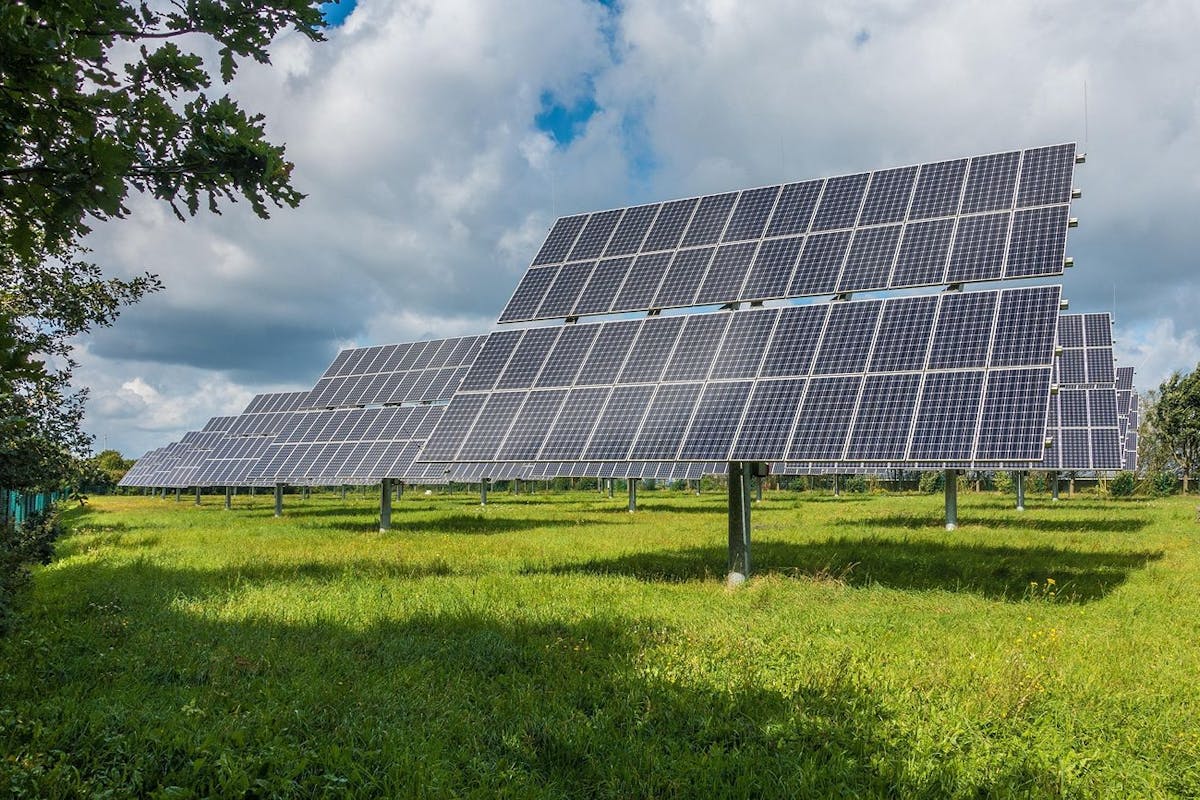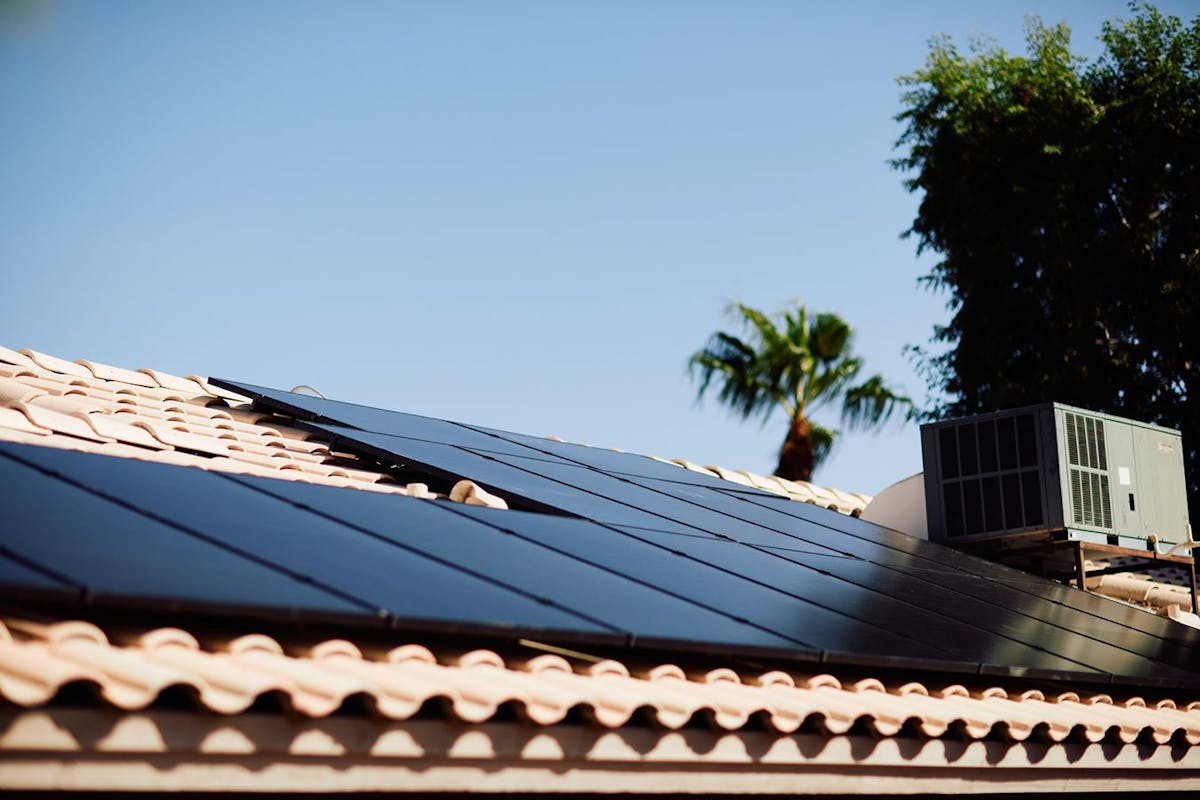The Effects of Shade on Your Home Solar Panels
Last edited

Author
Andrew Giermak
Solar and Electrification Writer and Editor

Editor
Andrew Blok
Electrification and Solar Writer and Editor

A perfectly shadeless roof is the perfect place for home solar panels as solar panels work most efficiently when they are in full sun. But, what if part of your roof is in shade part of the time? Can it still be worth it to put solar panels there, or go solar at all?
Shade on your roof or property is just one factor in designing a solar power system custom-made for your home, roof, and energy usage. Shade affects solar power generation, but solar panels commonly work on roofs which are not 100% open to the sun 100% of the time. The best way to know if your roof will work for solar is to reach out to find out. Here’s what to know about solar power and shade.
See how much you can save by going solar with Palmetto
Do Solar Panels Work in the Shade?
Although direct sunlight is optimal for solar energy production, solar panels can still produce electricity in partially-shaded conditions. That said, the effect of partial shading on a solar panel will reduce its potential power output at a rate based on the percentage of shaded individual solar cells, the solar panel’s efficiency, and several other factors.
With the right equipment, configurations, and system design, shade on a single solar panel won’t reduce the performance of panels in the whole solar array, keeping the overall power generation at a consistent level.
If you are concerned about partial shading on your solar panels, talk to your installer about the impact it may have on your system’s total performance.
Are There Shade-Tolerant Solar Panels?
While some will say there is no such thing as a “shade-tolerant solar panel” there are several technologies that can help curb the adverse effects of shade on solar power production. Today, most solar panels use built-in “bypass diodes” to help partially-shaded panels continue to produce electricity safely and efficiently, even if a cell (or multiple cells) is shaded.
As solar technology continues to improve and innovate, panels will continue to get better at dealing with shade.
See how much you can save by going solar with Palmetto
Our Top 3 Solar Panel Shading Solutions
If your property is partially shaded by trees, roof obstructions, neighboring buildings, or anything else under the sun, here are three things you can do to make the most out of your solar installation.
Find the best location with a solar panel shading analysis
Before you start talking with installers, it is relatively easy to determine the best place for solar panels on your property. Using a resource such as Palmetto's solar savings tool, you can instantly see a shading analysis of your property to discover the best, shade-free spots for installing solar panels.
If you are wondering how solar shade calculators work, the most important thing to remember about panel placement is they should receive full sunlight as often as possible to capture as many peak sun hours. While a little shade on your panels close to dusk or dawn will reduce smaller amounts of solar output, harnessing full sunlight during midday and early afternoon is critical for your system’s overall performance.
As such, the optimal location for solar panels installed in the United States is typically found on a southern-facing roof that receives direct sunlight during the majority of the day, every day of the year.
Consider module-level power electronics (MLPEs)
If you have already done everything in your control to optimize the location of your solar panels, the easiest way to boost their shade tolerance is by utilizing module-level power electronics (MLPE) like microinverters or power optimizers.
When solar panels are wired together into a traditional string inverter, one shaded panel may reduce the performance of other connected panels, even if they are in direct sunlight. This is because multiple solar panels wired in a “string” or “chain” may only “be as strong as their weakest link” causing overall power outputs to drop when a single panel is shaded.
To prevent such losses, MLPEs can be added at the “module level” (one per solar module or panel) to allow your solar panels to operate more independently than in a string inverter system. While power optimizers can boost panel performance alongside a string inverter system, microinverters are an alternative to string (or central) inverters and are usually installed directly beneath each panel.
Work with an expert
When partial shading comes into play, working with an expert to design and install your solar energy system will be the best way to optimize its performance. With an experienced solar expert by your side and answering all your questions, you can ensure you are maximizing your property’s space and generating the most solar power possible to save on energy bills and make the best investment.
Occasionally, you might also be able to trim or remove trees to allow for more direct sunlight to reach your panels. If you are working closely with a knowledgeable designer, they may be able to help you calculate whether or not the increased efficiency of your solar panel system will make up the costs of hiring an arborist.
For questions about your property’s unique solar suitability, use our free solar savings tool to begin getting information specific to your address. Once you’ve gone solar, you can use the Palmetto app to monitor your system’s production and find more ways to save energy and save money.
See what solar can do for you:
Frequently Asked Questions
What happens with solar panels on cloudy days?
Solar panels will generate electricity on partly cloudy and overcast days, but less than on sunny days. A professionally-designed system should take local climate into account and, for instance, have an increased system size in places with a lot of overcast days.
Are solar panels safe for my roof?
Solar panels are safe on most roofs. In some cases, generally with older roofs or with some roofing material, renovation work may be needed before installing a solar system.
Why should solar panels face south (in the US)?
Solar panels generally are installed south-facing so they receive sunlight at or close to a perpendicular angle as often as possible during a day and a year.



